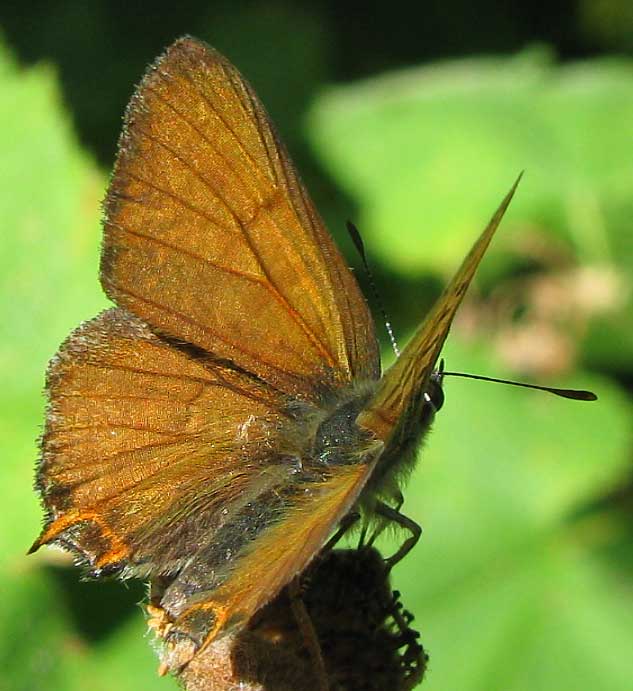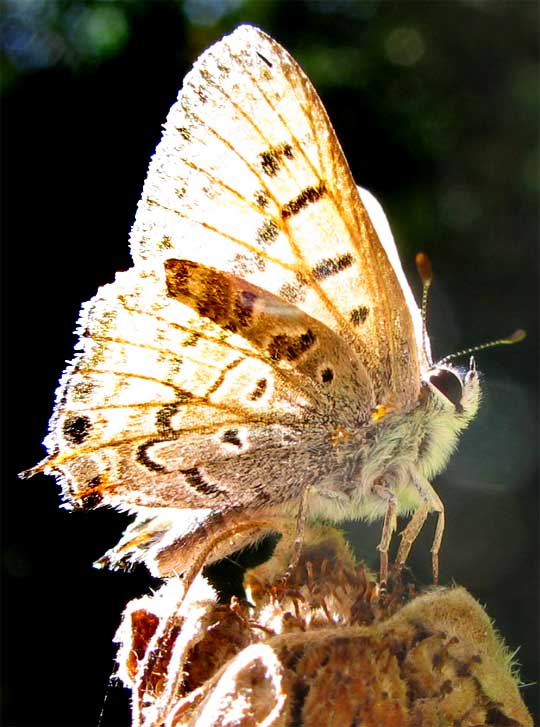Excerpts from Jim Conrad's
Naturalist Newsletter

from the August 2, 2009 Newsletter, issued from the Siskiyou Mountains west of Grants Pass, Oregon:
TAILED COPPER ON A THIMBLEBERRY
Down in the valley where streamside Thimbleberries grow, the other day a butterfly showed up with rich, dark-rusty coloration different from anything else I've seen here. A little "tail" arose from his hind wings as if he were a hairstreak, but hairstreaks seldom are so foxy colored. You can see all this above. Another view, with sunlight exploding in his wings, is below.

Bea in Ontario with her fast Internet connection identifies this as a Tailed Copper, LYCAENA AROTA, called Tharsalea arota in my old Audubon field guide. Copper butterflies constitute a subfamily in the Gossamer-wing Family. Some copper species occur in the East but the West is home to most of them. Our Tailed Copper is distributed from here in southern Oregon south through California into Mexico, east to the Great Plains and New Mexico.
One reason I may have been missing this species is that it's most commonly found in moist areas, and I'm usually on dry slopes and ridges. Its main host plant -- what its caterpillars eat -- are wild currants and gooseberries of the genus Ribes, and you've seen that we have those here.
Tailed Coppers are "strongly sexual dimorphic," meaning that males and females are very different looking. The male's upper surface is copper-brown with an iridescent purple sheen (that's a male in the picture) while the female is orange with a dark brown pattern. Uncharacteristically for the coppers, male Tailed Coppers are territorial and in the morning perch in sunflecks, often high in trees, watching for females. That's what the one in the picture is doing.
A subspecies known as the Clouded Copper occurring near Los Angeles is classified as critically imperiled, but ours is the common type and is more or less holding its own, tending to be common locally, then absent from large areas.